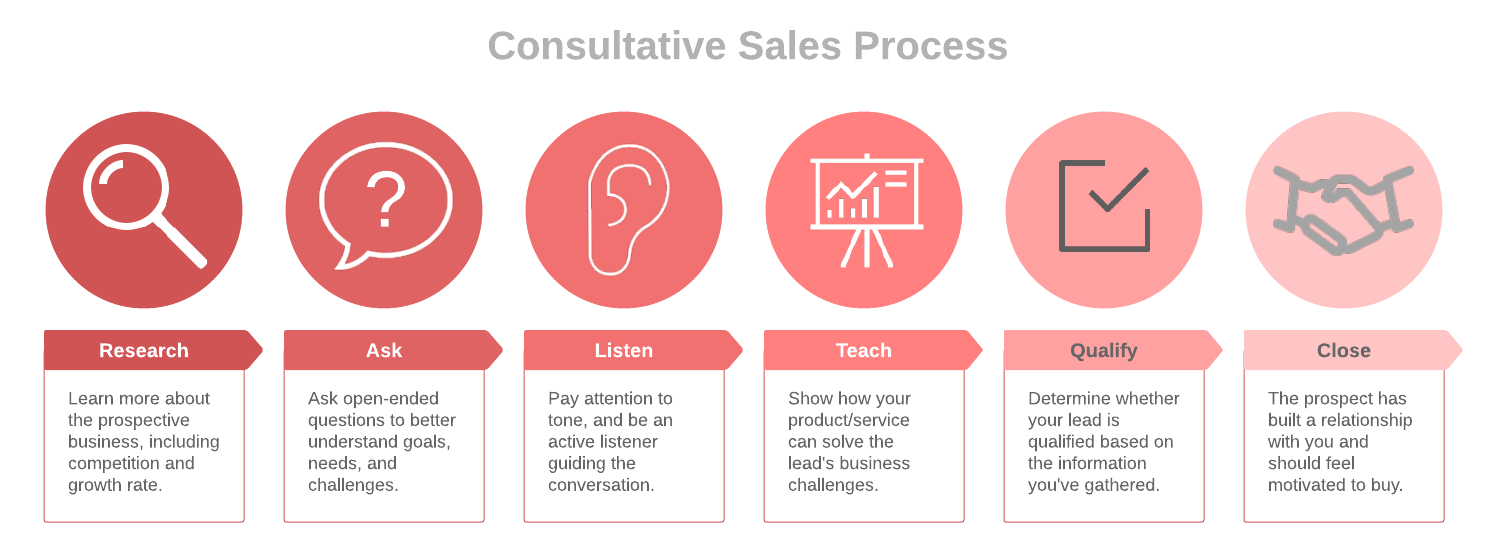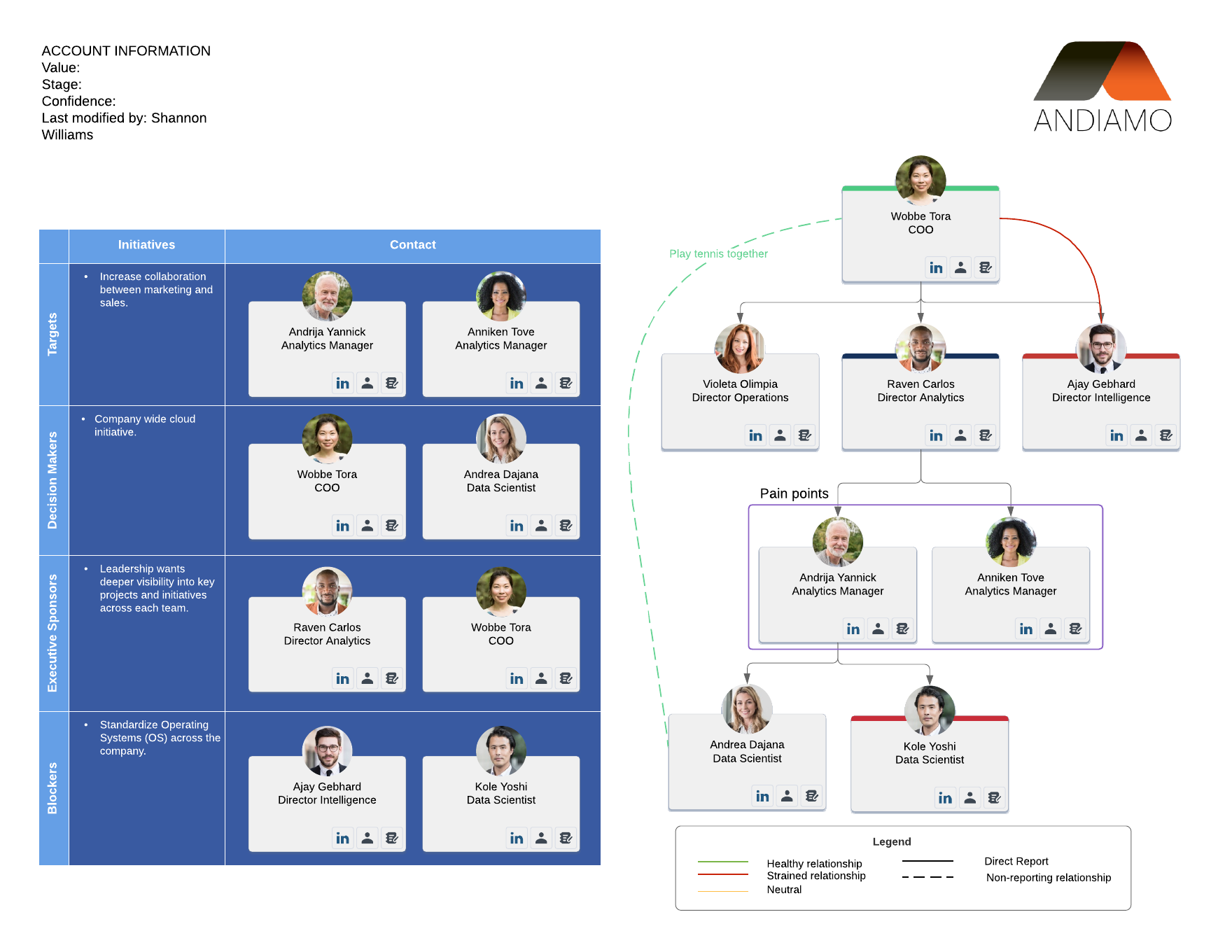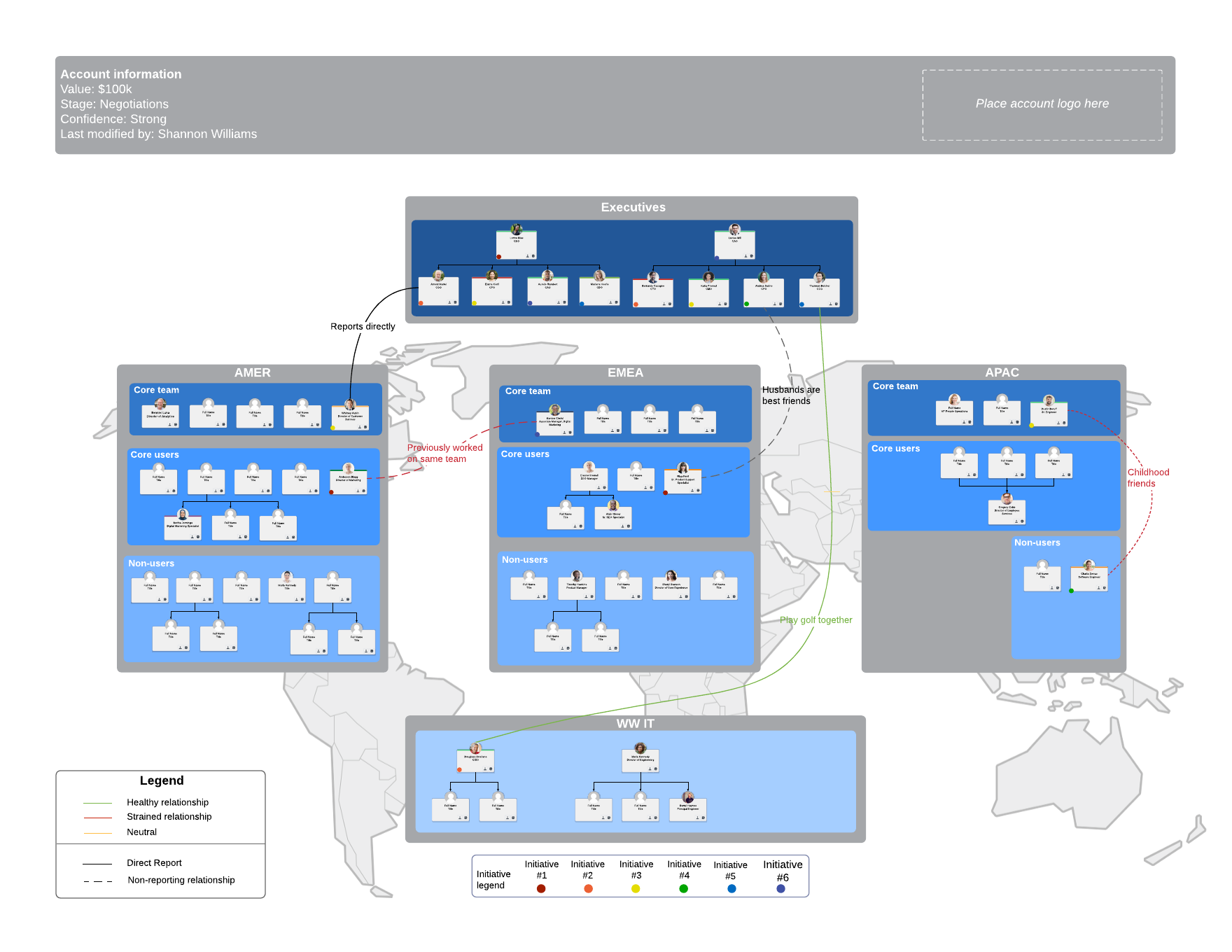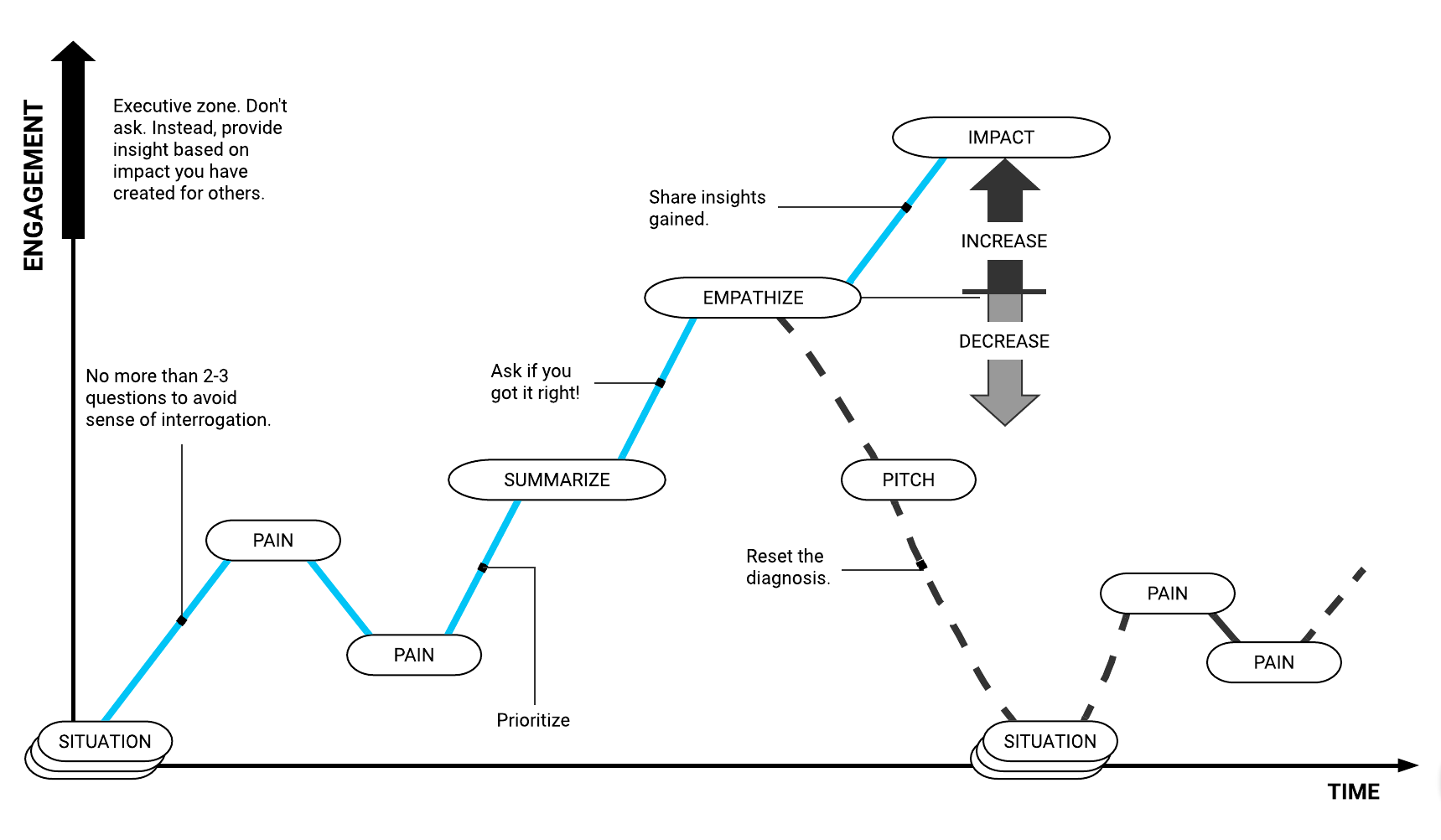Modern sales have come a long way since the days of door-to-door salesmen and catalog mailers. Even still, “sales” can be a bit of a dirty word. Depending on whom you ask, the term “salesman” can conjure up images of cheaply dressed charlatans manipulating others into spending hard-earned money on things they don’t need, to solve problems they don’t have. But the best salespeople understand a simple tenet of sustainable business: All business should exist to serve the needs of the customer.
The consultative selling model tries to do just that.
Consultative selling is about building a relationship with your customers. Where traditional sales models are largely product-centered, the consultative selling model is customer-centered. Instead of immediately jumping in to push your product, consultative selling focuses on understanding the customer’s needs first so you can better solve their problems and deliver greater value.
In this way, salespeople can be thought of as advocates and advisors, always working to anticipate and solve their customers’ needs. The consultative selling process approaches business from this perspective, beginning with asking questions and always coming from a place of service.

What is consultative selling?
The consultative selling model, also called solution-based sales or needs-based sales, requires salespeople to understand exactly what they are selling and who that product or service is intended to serve. That way, they can focus on building a relationship and finding the right product to fit their customer’s expressed needs.
Thanks to the internet, data collection and analysis are available at our fingertips. Companies are able to reach the entire world with their product or service, and through SEO and data tools, you can monitor interactions with your company’s website, collecting valuable insight on where your leads find the most value within your offerings.
The consultative sales process, then, is both a proactive and reactive approach.
There are six consultative selling process steps:
- Research
- Ask
- Listen
- Teach
- Qualify
- Close
At the heart of the consultative sales process is the principle that the salesperson or representative cares more about their customer or lead than they do about making money. This is a simple concept—but radical in the world of sales where a run-of-the-mill pitch has been the norm and profit drives most, if not all, business decisions.
To picture what this looks like, consider a simple example of consultative selling: car shopping. A customer goes to a dealer looking to buy a car. The salesperson can either start pushing their fanciest or most expensive car on the lot. Or they can follow the consultative selling process to figure out what car is right for the customer.
This would start with the salesperson asking lots of questions to learn what the customer is looking for, why they’re choosing to buy a car now, what problems they may have had with their old car or previous dealerships, and what preferences they may have. After listening to the customer’s answers, the salesperson can then start making recommendations and advising on the advantages or disadvantages of each option. By listening to the customer and educating them on their options accordingly, the salesperson comes across as helpful rather than pushy. Once the customer understands their options, they can confirm their interest and readiness to move forward. From there, it’s just paperwork, a handshake, and a happy customer.
To better understand the consultative selling process, we’ve broken down each step below:
Research
To serve your clients’ needs, thorough research into their business and industry is necessary. At this phase in the process, the more information you have, the better. Begin with your lead’s industry, and start with some of these questions:
- What is my lead’s revenue model?
- Who is their competition?
- What is the growth rate of their industry?
- What types of problems are similar companies trying to solve?
The goal of the research phase is for your salespeople to be viewed as a resource to your leads. By breaking the mold of hunting down easy sales and quick conversions, and instead being a resource of information and servitude, the consultation sales process helps your company stand out with authenticity.
As you begin this phase of the sales process, initiate an account map to help you understand the landscape of the company. Account maps can help you keep information organized—as you learn more about the company, you can add key players and take notes in the context of the relationships you're building.
If you use Lucidchart, you can even sync new information back to Salesforce. By giving anyone within your organization the ability to easily access and share this information, you'll ensure the right people on your team are informed and are best able to support.


What to avoid: Even with all of your research, never assume that you know everything about your customer or lead. Curiosity is essential. Your research merely sets you up better for the next stage of the consultative selling process.
Ask
Now that your research has given you the insight into your prospective customer, you can start asking questions to better understand their goals, needs, and challenges.
However, in order to build trust, it’s important to not make any assumptions of what the prospect’s answers may be. Ask open-ended questions to allow your prospect to volunteer information about themselves and their business.
What to avoid: Don’t ask leading questions or answers that could be answered with a “yes” or a “no.”
Listen
Listen not just for answers, but for sentiment. Pay special attention to tone, inflection, hesitations, or quick responses. These are all clues into what’s most important to your lead. Above all, be an active, not a passive, listener. This way, you’re not just waiting to respond with your standard soundbites, but instead are actively taking note of what they say and pivoting the discussion to make them feel fully heard and understood.

For more guidance on sales conversations, make sure to check out our blueprints from Winning by Design.
What to avoid: Don’t let your prospect lead the entire conversation. Listen strategically to determine how you’ll move the conversation to the next steps in the process. Remember, you're acting in an advisory role here, so the customer is trusting you as the expert to guide them through the nuances of their problem and the possibilities of your solutions.
Teach
Of course you’re trying to close deals, but the best salespeople also solve problems. By teaching prospects how to establish a plan of attack to address their challenges, you’ll become not only a teacher—but a business savior, too. Presenting solutions will build further trust in your relationship and drive a sense of loyalty when it comes time to sign on the dotted line.
As you explain your solution and demonstrate ROI, consider using current vs. future state diagrams to show how the prospect's processes or systems would be improved with your product or service.
What to avoid: Don’t show your full cards. Weigh the advice and guidance you give against the insights you still need to gain from your customer.
Qualify
Consider this: Maybe you’ve had productive conversations with your lead. But at some point, your prospect revealed that their budget is non-existent. Or, you discover that their company is preparing for a strategic shift that will render your product or service obsolete. In short, you realize the lead is not qualified.
Yes, the goal of the consultative sales process is about relationship-building. But it’s also about selling. Once you determine a lead is unqualified, move on.
What to avoid: Don’t keep trying to sell deals just because you’ve already made a hefty time investment. Perhaps the trust you’ve built will help close a deal if and when they become a qualified prospect down the road.
Close
If you’ve done your research, you’ve listened, you’ve taught, and you’ve qualified that this is indeed a good lead, then closing your sale should be fairly easy at this point. Your stakeholders have built a relationship with you, they have the budget to make a decision, and they have incentive to solve their problem easily and positively.
What to avoid: If you still face opposition at this point, don’t give up too easily and don’t discount your work. Instead, ask your customer or stakeholder how else they intend to hit their business goals without your help. Maintain a position of serving their needs, and view everything with the same long-term lens.
A deeper way of trading
The consultative sales process isn’t just savvy business or a lesson in charm school—it’s proven cognitive science. Research has shown that active listening actually increases well-being due to our inherent need for connection; when we are able to drop our agenda for ourselves and forget about what we’re preparing to say next, we invite a priceless opportunity for connection.
Throughout the whole solutions-based process, by beginning with a product or service that you understand and truly believe will solve problems positively, you can be ensured that your authentic connection with a customer can result in a closed deal.
Explore Lucidchart for sales
When building a leads list, any rep can use Lucidchart to seamlessly create shareable account maps of qualified leads and decision-makers. These account maps can be centrally stored and managed in Salesforce, allowing your employees and teammates to have immediate access.
But the real power of Lucidchart is in diagramming: Sales reps and engineers can use Lucidchart to illustrate important business metrics like ROI and workflow systems. If it can be diagrammed, it can be benefitted by Lucidchart.

See how Lucidchart strengthens any sales methodology, creating adherence and uniformity across your org.
Learn moreAbout Lucidchart
Lucidchart, a cloud-based intelligent diagramming application, is a core component of Lucid Software's Visual Collaboration Suite. This intuitive, cloud-based solution empowers teams to collaborate in real-time to build flowcharts, mockups, UML diagrams, customer journey maps, and more. Lucidchart propels teams forward to build the future faster. Lucid is proud to serve top businesses around the world, including customers such as Google, GE, and NBC Universal, and 99% of the Fortune 500. Lucid partners with industry leaders, including Google, Atlassian, and Microsoft. Since its founding, Lucid has received numerous awards for its products, business, and workplace culture. For more information, visit lucidchart.com.
Related articles
4 steps to build a sales process flowchart and boost revenue
A picture is worth a thousand words, and in sales, a visualizd process flow could prove to be worth millions in revenue. Learn the steps to build a sales process flowchart from Lucidchart's own VP of Sales.
How to Have Meaningful Conversations That Triple Your Sales
One of the biggest problems I faced as a new inside sales rep was how to have a conversation that resonated with my buyer. After diving into the structure of my calls with my manager, we found that my calls were more of the interrogation approach, asking closed-ended questions. If there is one major piece of advice I can give, it is to learn from my failure.

